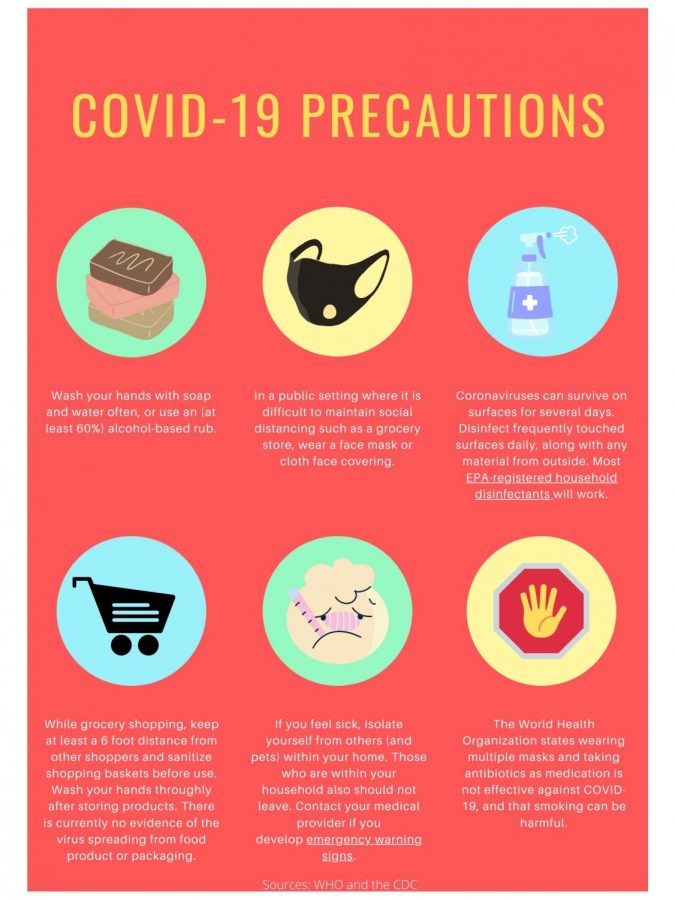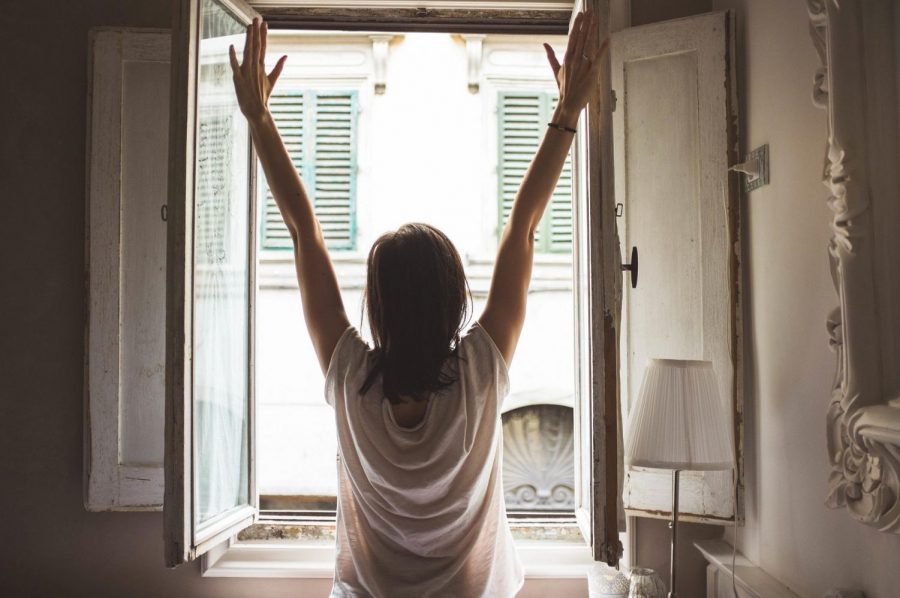How to establish healthy routines during self-isolation
In the reaction to the 1918 flu pandemic, St. Louis, Missouri started self-isolating early and suffered one-eighth of the flu fatalities that Philadelphia did, where self-isolation did not go into effect till later. Looking at this example, these precautions are evidently vital to not only personal safety, but to save the lives of the elderly and those with medical conditions, along with healthcare workers, delivery workers and many others providing essential services at this time. Staying home is a huge service to yourself and the people around you, and while some may not see it as a hardship or mock those who are unable to, most reviewed studies report negative psychological effects associated with quarantine (including post-traumatic stress, confusion, and anger) so yes, there is a struggle.
With the sudden change of lifestyle, it can become lonely and difficult to maintain a routine. A healthy way to cope while at home would be taking breaks from looking at or listening to news sources as well as social media. Some other healthy habits to take on during this time would be meditating, eating healthy meals and getting enough sleep. Take this as an opportunity to do your work or school routine your own way. Here are some other things I incorporate into my everyday life:
#1: Sunlight
The first thing I do in the morning is open my window. Sunlight in the morning elevates my mood and is linked to an increase in the brain’s release of serotonin which helps during this uneventful time. Light is also used as a form of therapy for various conditions such as insomnia, depression, post-traumatic stress disorder (PTSD) and Seasonal Affective Disorder. Additionally, your circadian rhythm is regulated by daylight. The less sunlight you have, the more tired you are, so open your curtains!
#2: Hydration
I start my day with one cup of cold water in the morning, and continue this habit throughout the day. Hydration is very important throughout the day. It’s become more of a fashion accessory in our generation as we focus on eliminating waste and our physical health. According to Mayo Clinic, an adequate daily fluid intake is 15.5 cups for men and 11.5 cups for women (although this can vary from person to person). I haven’t tried detox water yet, but some healthy combinations to have throughout the day are: cucumber and mint, lemon and lime, and lemon and ginger.
#3: Skin care
Skin is the body’s largest organ and needs proper care, and now there’s a lot of time in the day to focus on a skin glow up. Establishing a skincare routine for myself is important for my combination/dry skin and helps me feel and look more awake. Deciding your routine is about knowing your skin type and selecting products based on this. Try to incorporate these six things in your morning routine: cleanser, toner, a serum, face moisturizer, SPF (for open windows) and body moisturizer. My skincare consists of African black soap, Lush Breath of Fresh Air toner, Glossier Super Glow serum, Aveeno Positively Radiant moisturizer/SPF and Aveeno Daily Moisturizing Body Lotion which are all great for my combination skin. It’s also important to know what to avoid when looking for skincare.
#4: Morning stretches
This is a step that was easy to skip during busy school days but now is something I try to do within the first half hour of waking up. Stretching in the morning increases flexibility and blood circulation and prevents stress. I find most of my stretch routines on Pinterest, which is also where I find information such as not to stretch a cold muscle, which is a muscle that hasn’t been warmed up. If you stretch regularly, you should start to see results in your flexibility within a couple of weeks (this varies from person to person). Overall, this is a great way to get your body ready for an active day instead of slouching in front of the television all day.
#5: Don’t skip breakfast
A 2019 study shows that 17.4% of teenagers frequently skip breakfast, which can lead to lower test scores, excessive weight gain and restlessness. I have a lack of appetite in the morning, school or not, so instead I have a caffeinated breakfast smoothie as an alternative to a full breakfast with coffee. As teenagers, it is important to develop habits of good eating as we move into adulthood, which should involve incorporating healthier choices into our breakfast. Some of the best foods to include in your breakfast are eggs, Greek yogurt, oatmeal, chia seeds, berries and nuts.
#6 Exercise:
As students, you might be used to going from class to class, work, athletic practice or out with friends — all of which may have previously accounted for your necessary daily exercise. Without these everyday activities, it might be tempting to take this time to sit around and sleep, which is OK, but after a certain point your body will start to feel the negative effects: gaining weight (which is normal but at a point will become excessive), becoming sluggish, losing strength or having inflammation.. The American Heart Association recommends one hour of moderate to vigorous physical activity per day. There are many options for exercising, despite not having access to a gym. Try to fit in an hour-long walk, or maybe 30 minutes of walking and 30 minutes of an at-home workout. Maybe encourage yourself by buying some workout clothes or equipment online.
Being productive is not a necessity or competition during this time, so go ahead and take the time to relax if that’s what you prefer — but remember to take care of yourself. Self-care is a part of proper relaxation so you don’t become unenergetic, and can pick yourself right up when it’s time to work. Also remember to stay safe during this time by following guidelines provided by the World Health Organization (WHO) and the Centers for Disease Control and Prevention (CDC). Dealing with a little struggle now may save us from having to deal with more damage later on.

View the list of EPA-registered household disinfectants here and the list of emergency warning signs here.






